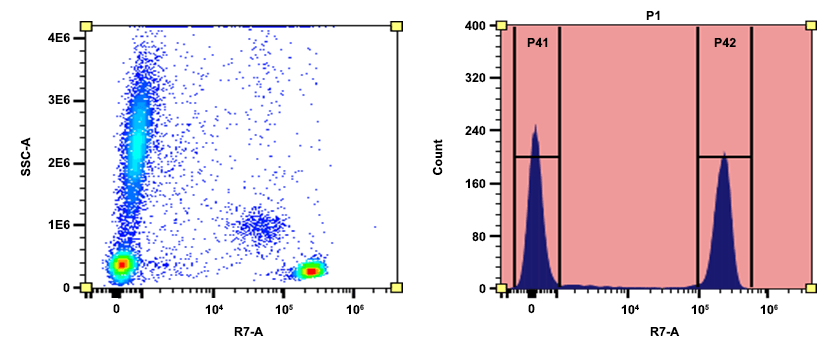ReadiUse™ Preactivated APC-iFluor® 750 Tandem
Allophycocyanin (APC) is a phycobiliprotein isolated from Spirulina sp., a blue-green alga. Like other phycobiliproteins, APC is fluorescent, with an extremely high absorptivity and a high quantum efficiency. Our APC-iFluor® 750 Tandem is an excellent replacement for APC-Cy7® and APC-Alexa Fluor® 750 Tandem due to their similar spectral properties. Our APC-iFluor® 750 Tandem is more photostable than APC-Cy7® Tandem. ReadiUse™ Preactivated APC-iFluor® 750 Tandem is an activated APC protein, and can be easily conjugated to antibodies with much higher conjugation yield than the conventional APC.


| Catalog | Size | Price | Quantity |
|---|---|---|---|
| 2571 | 1 mg | Price |
Physical properties
| Molecular weight | ~105000 |
| Solvent | Water |
Spectral properties
| Extinction coefficient (cm -1 M -1) | 700000 |
| Excitation (nm) | 651 |
| Emission (nm) | 791 |
Storage, safety and handling
| H-phrase | H303, H313, H333 |
| Hazard symbol | XN |
| Intended use | Research Use Only (RUO) |
| R-phrase | R20, R21, R22 |
| Storage | Refrigerated (2-8 °C); Minimize light exposure |
| UNSPSC | 12171501 |
Documents
Contact us
| Telephone | |
| Fax | |
| sales@aatbio.com | |
| International | See distributors |
| Bulk request | Inquire |
| Custom size | Inquire |
| Technical Support | Contact us |
| Request quotation | Request |
| Purchase order | Send to sales@aatbio.com |
| Shipping | Standard overnight for United States, inquire for international |
Page updated on December 15, 2025

